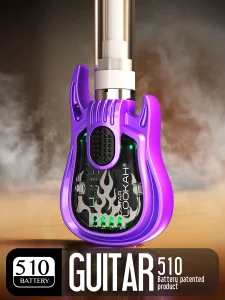High-Performance Thermal Management Materials for Efficient Heat Dissipation
Understanding Thermal Management Materials
In today’s fast-paced technological landscape, the efficient management of heat is paramount. As electronic devices become more powerful and compact, the need for effective thermal management materials has surged. These materials not only enhance device performance but also extend their lifespan by preventing overheating. Consequently, understanding these materials, their properties, applications, and future trends is essential for engineers and manufacturers alike.
What Are Thermal Management Materials?
Thermal management materials encompass a wide range of products specifically designed to control heat dissipation in electronic applications. They serve as thermal interfaces between components, ensuring efficient heat transfer away from sensitive parts of devices. Common types of thermal management materials include thermal interface materials (TIMs), gap pads, phase change materials (PCMs), and thermal adhesives.
Each of these materials has unique properties and applications, providing various heat transfer capabilities ranging from modest to extremely high conductivity. The right choice depends on the specific thermal management requirements of an application, making familiarity with these materials crucial for innovation in many industries.
Importance of Heat Dissipation in Electronics
The significance of heat dissipation in electronic devices cannot be overstated. Excess heat can lead to diminished performance, reduced reliability, and, ultimately, premature failure of electronic components. As devices like smartphones, CPUs, and GPUs become more compact and powerful, the amount of heat generated increases significantly. Failure to manage this heat effectively may lead to thermal throttling, where the device reduces its performance to prevent damage from overheating.
The implementation of effective thermal management solutions allows electronic devices to operate at optimal temperatures, thereby enhancing their performance and lifespan. Moreover, efficient thermal management can prevent technical failures, ensuring consumer satisfaction and driving brand loyalty.
Common Types of Thermal Management Materials
The array of thermal management materials available today can be categorized based on their functions, properties, and applications. Here are some of the most common types:
- Thermal Interface Materials (TIMs): These can include thermal pastes and pads that fill microscopic air gaps between components and heat sinks. Their main purpose is to enhance heat transfer efficiency.
- Gap Pads: Soft, conformable materials designed to fill gaps between components and heat sinks, providing both physical support and thermal management.
- Phase Change Materials (PCMs): These materials absorb and release thermal energy, helping to stabilize temperatures within devices during peak heat generation periods.
- Thermal Adhesives: These are used to bond components while ensuring efficient thermal conductivity, often used in applications where mechanical fasteners are not suitable.
Key Properties of Effective Thermal Management Materials
Thermal Conductivity Explained
One of the most critical properties of thermal management materials is thermal conductivity. This property quantifies how well a material can conduct heat. High thermal conductivity is essential for materials used in thermal management, as it enables efficient heat transfer from heat-generating components to dissipating mediums such as heat sinks. For instance, materials with thermal conductivity ratings above 5 W/mK are often suitable for demanding electronic applications.
Different applications may require varying levels of thermal conductivity, necessitating a comprehensive understanding of how each type of material performs under specific conditions. Factors such as temperature stability and mechanical stress also play significant roles in the effective use of thermal management materials.
Comparing Thickness and Density
The thickness and density of thermal management materials greatly influence their performance. Thicker materials can fill larger gaps and provide greater thermal resistance, while thinner materials are often preferred for applications requiring minimal weight and bulk. Density impacts not only thermal performance but also the physical handling of materials, so balancing these characteristics is crucial.
High-density materials may provide better durability and thermal performance, but they might also weigh more and increase device bulk. Therefore, selecting the right material involves considering both the thermal capabilities and the physical constraints of the application.
Durability and Longevity Factors
Durability is another vital factor in thermal management materials. Devices often undergo significant thermal cycles, which can lead to material fatigue and degradation over time. It is essential to choose materials that can withstand these cycles without losing thermal performance or structural integrity. Materials like silicone-based TIMs and gap fillers typically exhibit good longevity and stability across various temperatures, while others may degrade more rapidly in harsher environments.
Moreover, factors such as thermal cycling, mechanical stress, and environmental exposure affect a material’s longevity and performance. Understanding these factors allows engineers to select the right thermal management solutions that last longer and maintain effectiveness over the lifetime of the equipment.
Applications of Thermal Management Materials
Use in Electronic Devices
Electronic devices are among the primary applications for thermal management materials. As discussed earlier, these materials are crucial in smartphones, computers, and gaming consoles. They help ensure that components like CPUs and GPUs dissipate heat effectively, maintaining optimal performance and preventing overheating.
In modern electronic design, integrating thermal management solutions early in the design process results in better overall performance and reduced product failures. Applications such as automotive electronics, telecom equipment, and consumer electronics all rely on robust thermal management materials for functional reliability.
Automotive Electronics
The automotive industry increasingly uses advanced electronics for features such as infotainment systems, navigation, and driver assistance technologies. These applications require efficient heat management solutions due to the compact spaces and high-performance requirements of automotive electronics.
Materials like thermal pads, adhesives, and phase change materials are commonly utilized to enhance heat dissipation in automotive modules. The continuous thermal challenges from engine components also necessitate materials that can withstand extreme temperature fluctuations and vibrations.
Telecommunication Applications
Telecommunication equipment, such as routers and cellular base stations, benefits significantly from thermal management solutions. As demand for higher data speeds increases, so does the heat generated by electronic components. Effective thermal management safeguards equipment from overheating, ensuring consistent performance and reliability in critical communication systems.
In these applications, thermal interface materials and gap fillers are essential for promoting heat transfer from devices to ambient environments, contributing to the efficient operation of telecommunication infrastructures.
Selection Criteria for Thermal Management Materials
Assessing Heat Resistance Needs
When selecting thermal management materials, it is essential to assess the heat resistance requirements of the application. The maximum operating temperature of components typically influences this choice. Products that operate within extreme temperature ranges may require specialized materials designed to endure environmental stresses, such as humidity and vibration.
Analyzing thermal profiles and understanding peak heating scenarios can help in selecting the most appropriate materials. Additionally, simulations and testing can facilitate a better understanding of how selected materials perform under specific conditions.
Adhesive Properties and Compatibility
Adhesive properties are critical in the selection process, especially when materials will be used to bond components and ensure effective heat transfer. Some applications may involve materials that need specific adhesive characteristics to ensure compatibility with different substrates. Testing for proper adhesion strength under thermal cycling and mechanical stress is essential to guarantee reliability.
Furthermore, considering chemical compatibility is crucial, as certain materials can degrade when exposed to different substances, which could compromise their thermal management capabilities.
Cost vs. Performance Analysis
In the selection of thermal management materials, the cost versus performance balance must be carefully evaluated. While high-performance materials may offer superior heat dissipation, they often come at a higher cost. However, choosing lower-cost alternatives could compromise product reliability and performance, leading to greater long-term costs.
Performing a complete cost-benefit analysis involves examining not only the initial material cost but also the anticipated performance, durability, and maintenance aspects over the product’s lifespan. Strategic investments in quality materials typically yield better overall value and product longevity.
Future Trends in Thermal Management Materials
Innovations in Development
The field of thermal management materials is evolving rapidly, driven by advancements in technology and rising performance demands. Innovations such as flexible thermal materials, customizable designs, and the incorporation of nanotechnology are paving the way for more efficient heat management solutions.
Research into materials with even greater thermal conductivity – such as advanced metallic composites and graphene-infused options – is ongoing and shows promise in meeting the burgeoning heat dissipation challenges in modern electronics.
Sustainability Considerations
With growing awareness of environmental issues, sustainability is becoming a focus in the development and application of thermal management materials. This includes the exploration of biodegradable materials and those made from recycled resources, advocating for a more eco-friendly approach in thermal management solutions.
By prioritizing sustainable options, manufacturers can not only reduce their environmental footprint but also enhance their brand’s image among consumers who increasingly prefer environmentally responsible products.
Impact of Emerging Technologies
Emerging technologies, including IoT and AI, are expanding the landscape of thermal management solutions. Smart devices often have complex cooling requirements due to their compact form factors and high performance, prompting the need for more specialized thermal management materials capable of meeting these demands.
Furthermore, advances in manufacturing processes, such as 3D printing, are enabling the creation of more intricate thermal management designs. This could lead to enhancements in performance and efficiency that were previously unattainable, setting the stage for the next generation of thermal management materials.














Post Comment